Physical Address
304 North Cardinal St.
Dorchester Center, MA 02124
On completion of this chapter, you should be able to:
List ways in which sonographic gray-scale images can present anatomic structures incorrectly
List ways in which spectral and color Doppler displays can present motion and flow information incorrectly
Describe how specific artifacts can be recognized
Explain how artifacts can be handled to avoid the pitfalls and misdiagnoses that they can cause
In sonographic imaging, an artifact is the appearance of anything that does not properly present the structures or motion imaged. An artifact is caused by some problematic aspect of the imaging technique. Some artifacts are helpful. They should be used to advantage in the diagnostic imaging process. Others hinder proper interpretation and diagnosis. These artifacts must be avoided or handled properly when encountered.
Artifacts in sonography occur as apparent structures that are one or more of the following:
Not real
Missing
Misplaced
Of improper brightness, shape, or size
Some artifacts are produced by improper equipment operation or settings (e.g., incorrect gain and compensation settings). Others are inherent in the sonographic and Doppler methods and can occur even with proper equipment and technique.
The assumptions in the design of sonographic instruments are that sound travels in straight lines, that echoes originate from objects located on the beam axis, that the amplitudes of returning echoes are related directly to the echogenicity of the objects that produced them, and that the distance to echogenic objects is proportional to the round-trip travel time (13 μsec/cm of depth). If any of these assumptions is violated, an artifact occurs.
Axial and lateral (detail) resolutions are artifactual because a failure to resolve means a loss of detail, and two adjacent structures may be visualized as one. These artifacts occur because the ultrasound pulse has finite length and width in the scan plane. Increasing frequency improves both resolutions, whereas focusing improves lateral ( Fig. 7.1A ). The beamwidth perpendicular to the scan plane (the third dimension in Fig. 7.1B ) results in section thickness artifacts, for example, the appearance of false debris in what should be echo-free areas ( Fig. 7.1C–D ). These artifacts occur because the interrogating beam has finite thickness as it scans through the patient. Echoes are received that originate not only from the center of the beam but also from off-center. These echoes are all collapsed into a thin (zero-thickness) two-dimensional image composed of echoes that have come from a not-so-thin tissue volume scanned by the beam. Section thickness artifact is also called slice thickness or partial volume artifact.
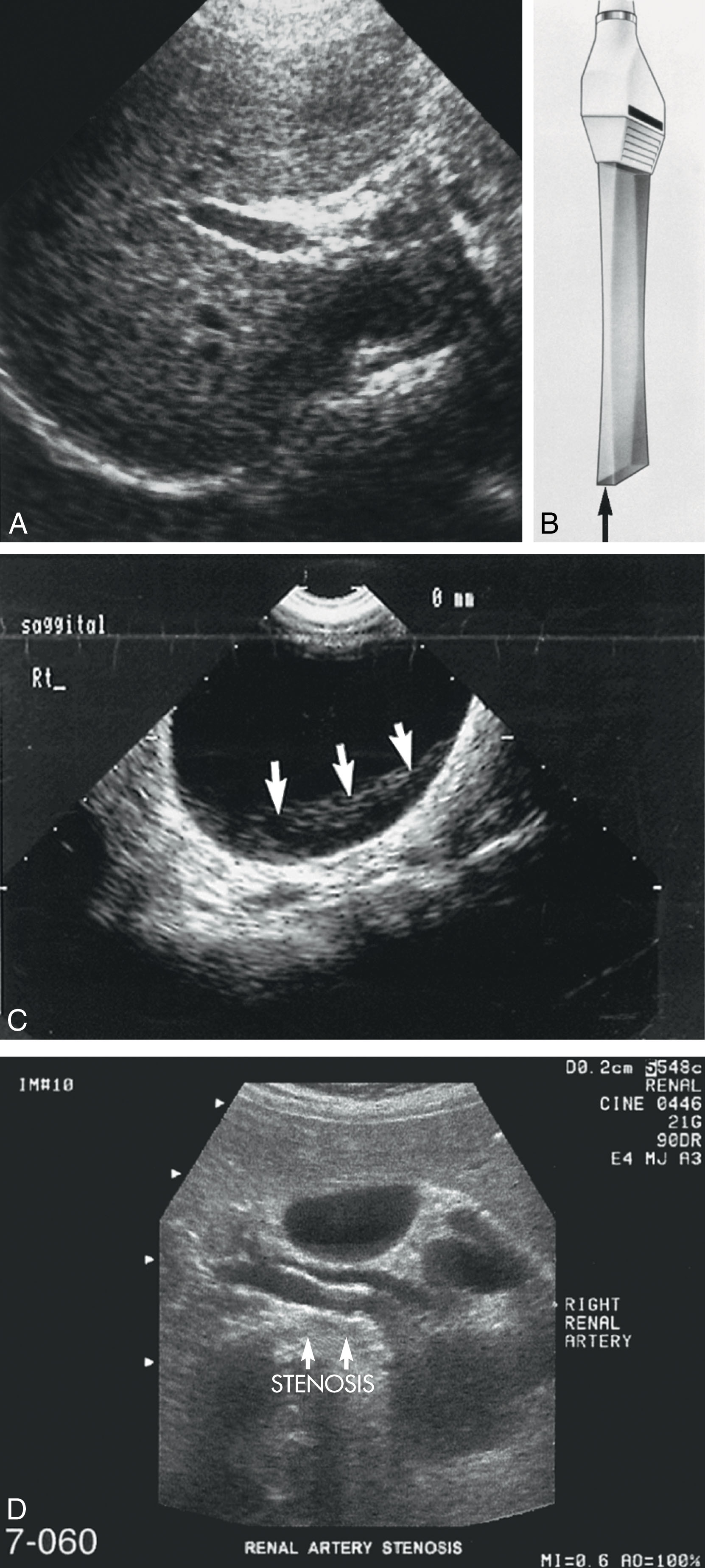
Apparent image resolution can be deceiving. The detailed echo pattern often is not related directly to the scattering properties of tissue (called tissue texture ) but rather is the result of the interference effects of the scattered sound from the distribution of scatterers in the tissue. There are many scatterers in the ultrasound pulse at any instant as it travels through tissue. Their echoes can combine constructively or destructively. The result varies as the beam is scanned through the tissue, producing the pattern of bright and dark spots. This phenomenon is called acoustic speckle ( Fig. 7.2 ).
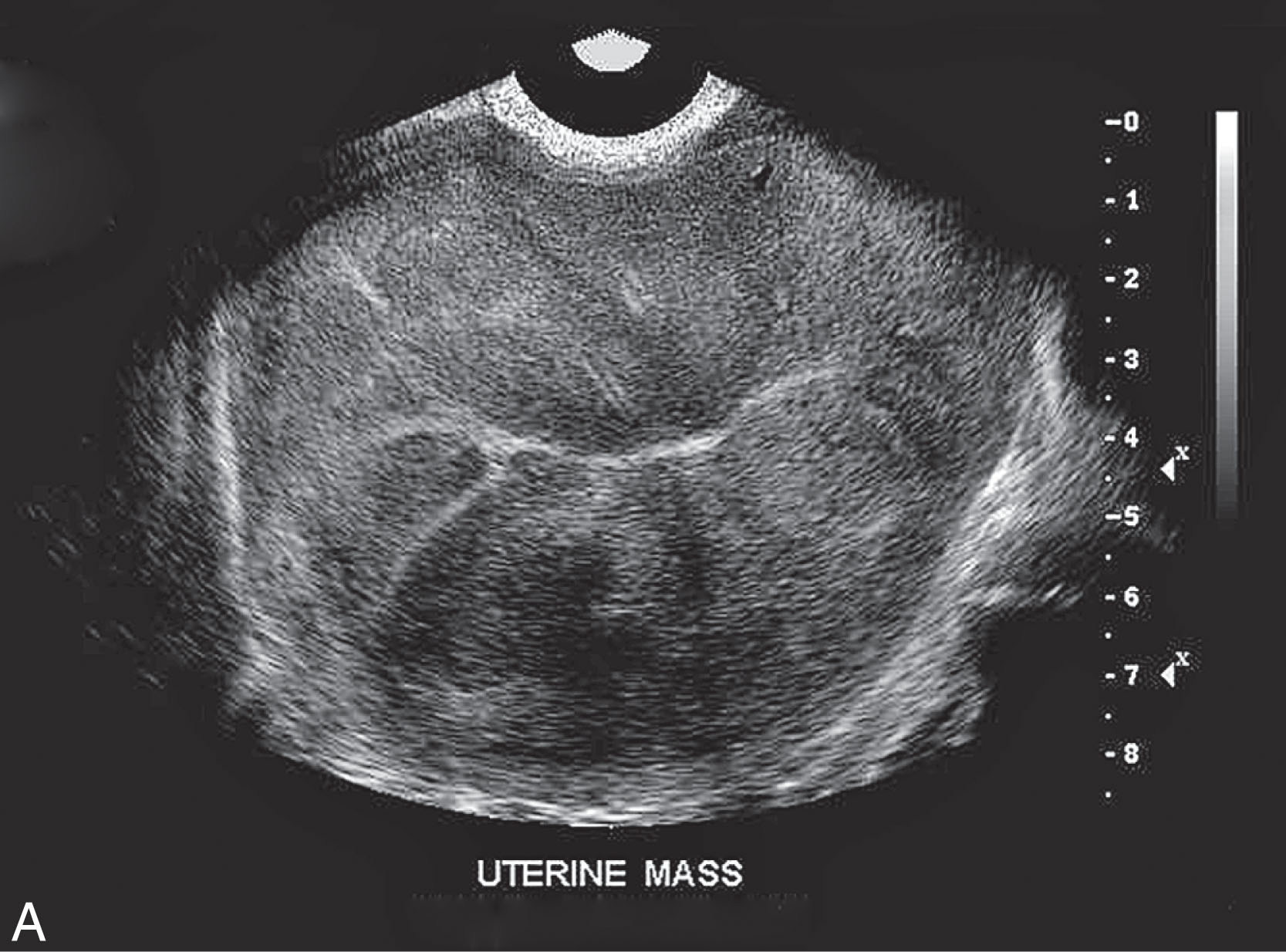
Multiple reflection , or reverberation , can occur between the transducer and a strong reflector ( Fig. 7.3 ). The multiple echoes may be sufficiently strong to be detected by the instrument and cause confusion on the display (additional echoes that do not represent additional structures). The process by which they are produced is shown in Fig. 7.3B . This results in the display of additional reflectors that are not real ( Fig. 7.4 ). The multiple reflections are placed beneath the real reflector at separation intervals equal to the separation between the transducer and the real reflector. Each subsequent reflection is weaker than prior ones, but this diminution is counteracted at least partially by the attenuation compensation (time gain compensation) function. Reverberations can also originate between two anatomic reflecting surfaces. When closely spaced, they appear in a form called comet tail ( Fig. 7.5 ). Comet tail , a particular form of reverberation, is a series of closely spaced, discrete echoes. Fig. 7.6 shows an artifact that appears similar but is fundamentally different. Discrete echoes cannot be identified here because continuous sound emission from the origin appears to be occurring. This continuous effect, termed ring-down artifact , is caused by a resonance phenomenon associated with the presence of a collection of gas bubbles. Resonance is the condition in which a driven mechanical vibration is of a frequency similar to a natural vibration frequency of the structure. The bubbles are stimulated into vibration by the incident ultrasound pulse. They then pulsate (expand and contract) for several cycles, acting as a source of ultrasound, producing a continuous stream of ultrasound that progresses distally to the bubble collection as the echo stream returns.
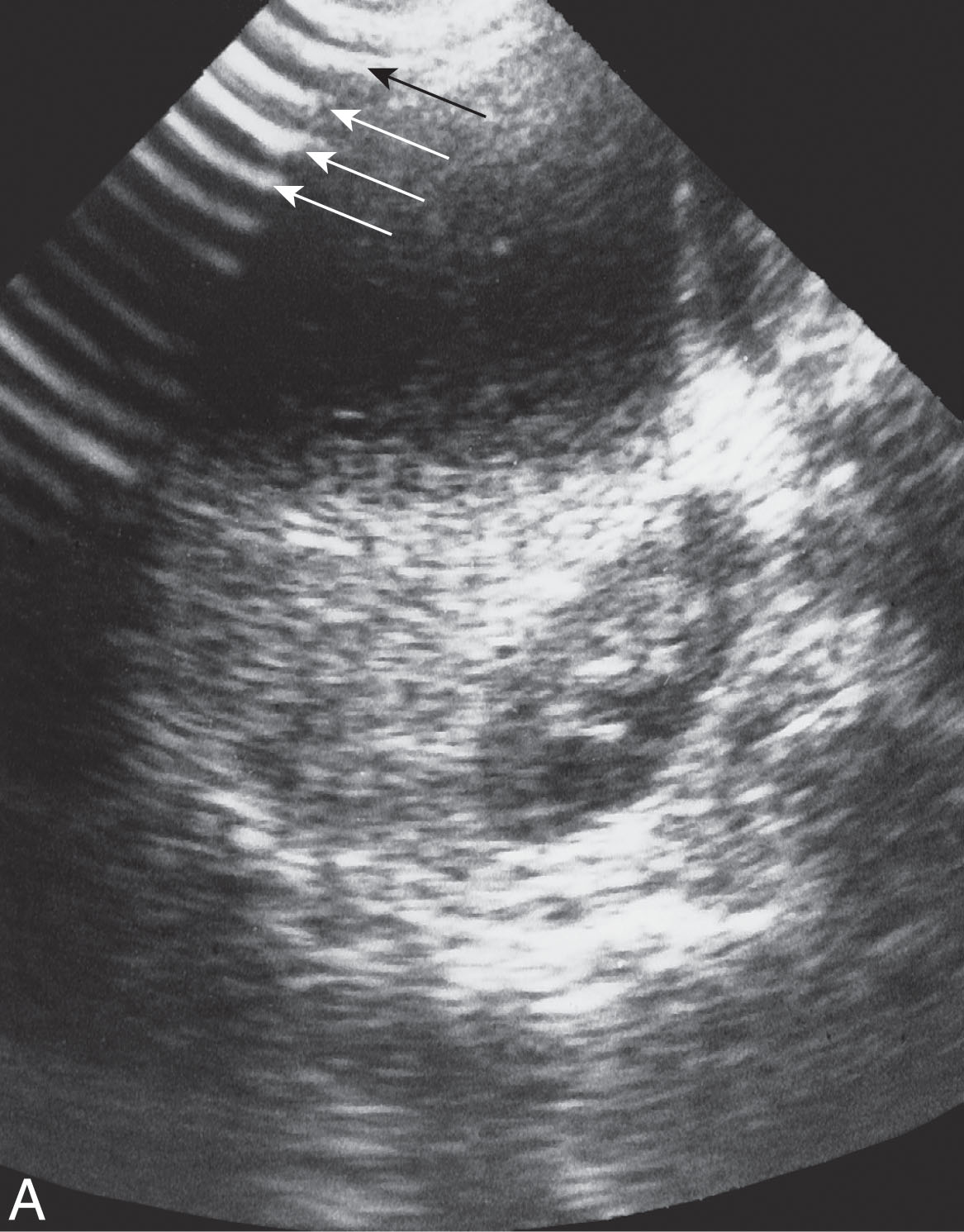
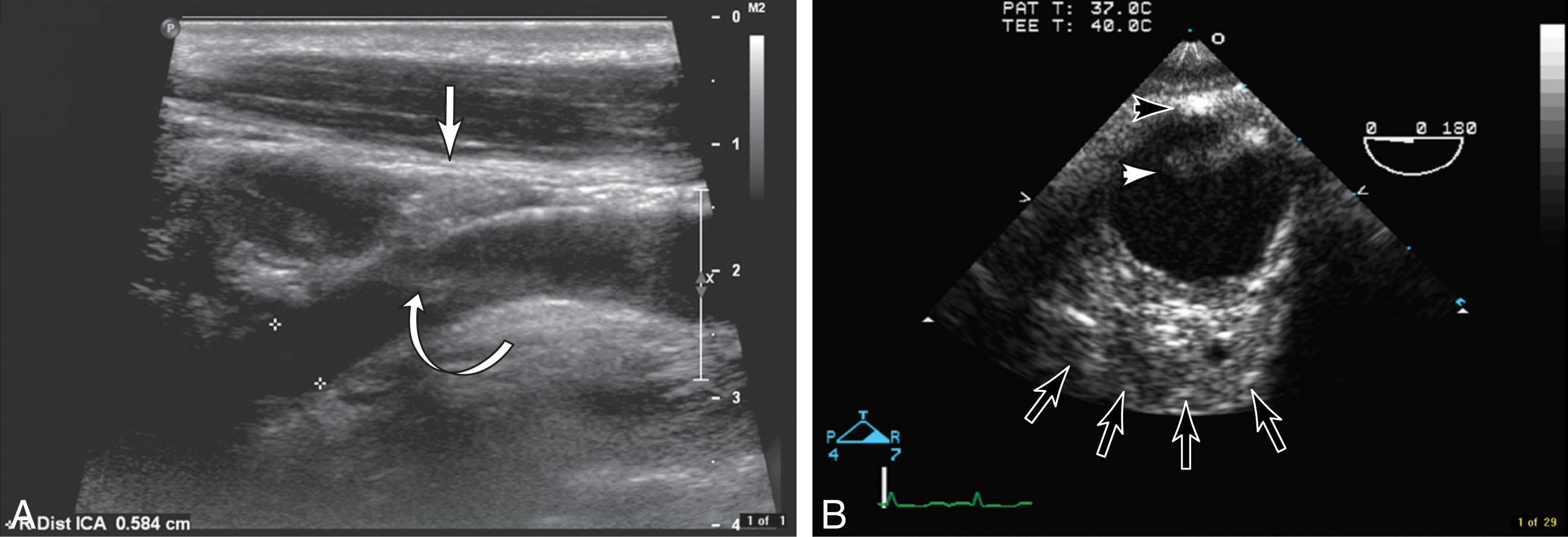
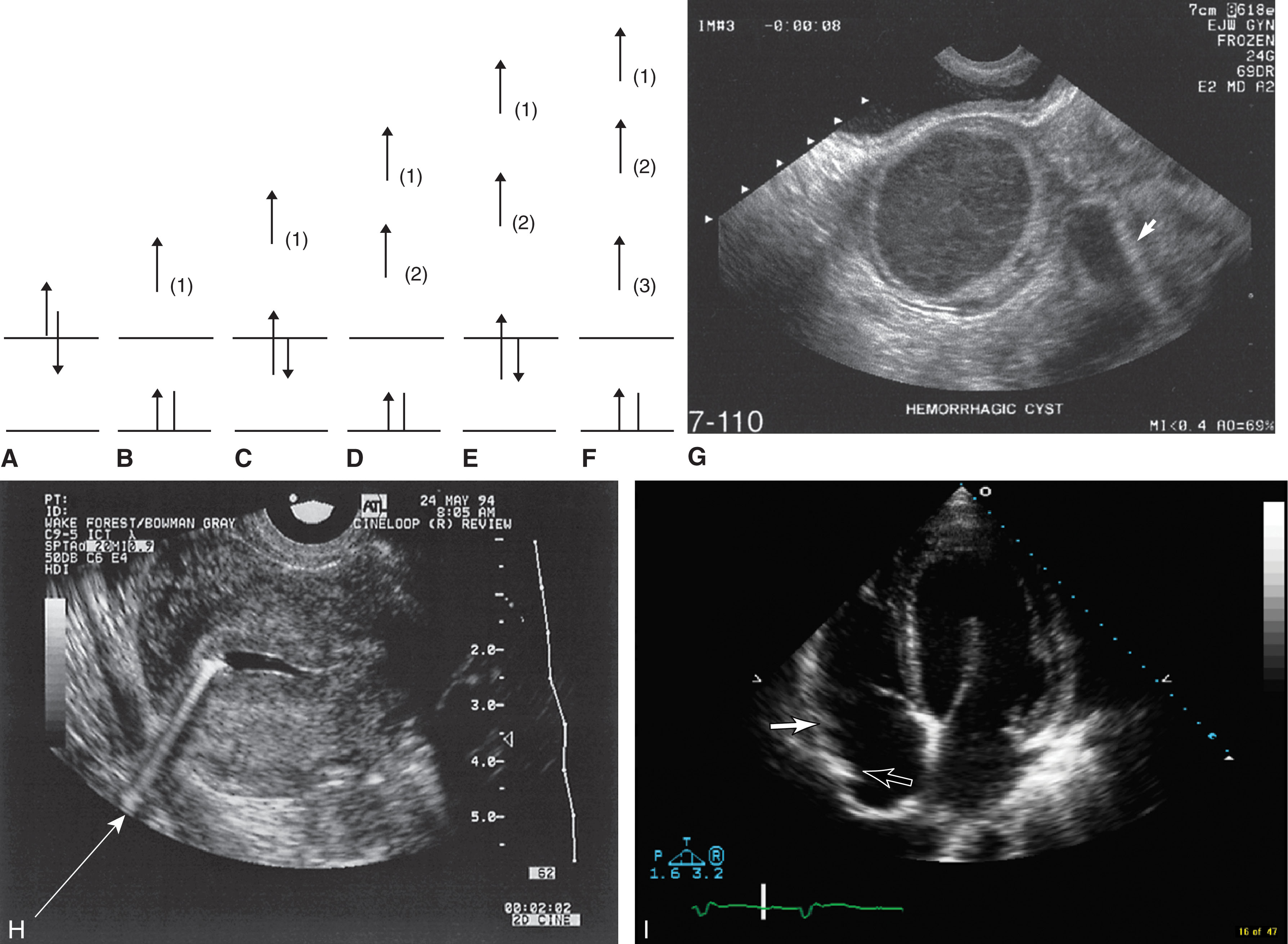
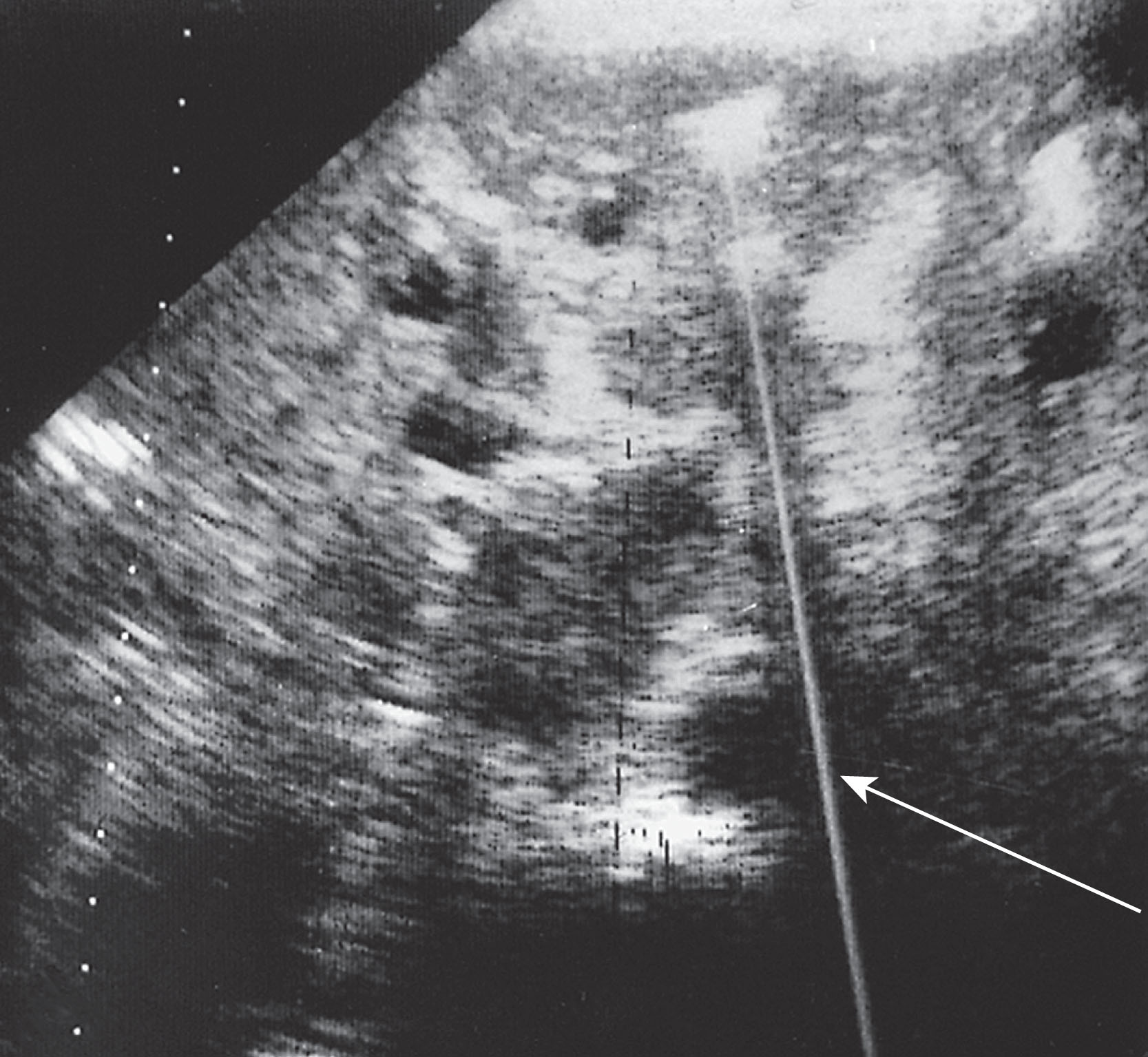
Mirror image , also a form of reverberation, shows structures that exist on one side of a strong reflector as being present on the other side as well. Fig. 7.7 explains how this happens and shows examples. Mirror image artifacts are common around the diaphragm and pleura because of the total reflection from the air-filled lung. They occasionally occur in other locations ( Fig. 7.7C ). Sometimes the mirrored structure is not in the unmirrored scan plane.
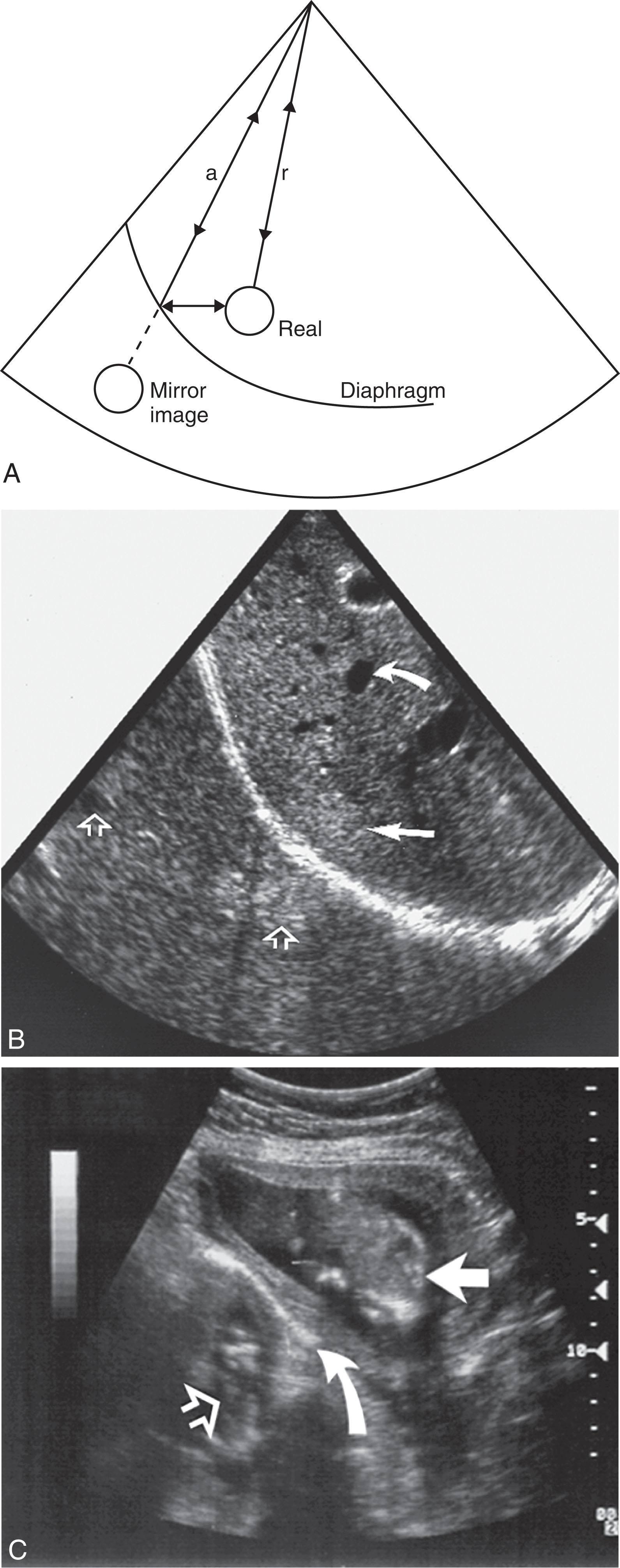
Refraction of light enables lenses to focus and distorts the presentation of objects, as shown in Fig. 7.8 . Refraction can cause a reflector to be positioned improperly (laterally) on a sonographic display ( Fig. 7.9 ). Refraction is likely to occur, for example, when the transducer is placed on the abdominal midline ( Fig. 7.10 ), producing doubling of single objects. Beneath are the rectus abdominis muscles, which are surrounded by fat. These tissues present refracting boundaries because of their different propagation speeds.
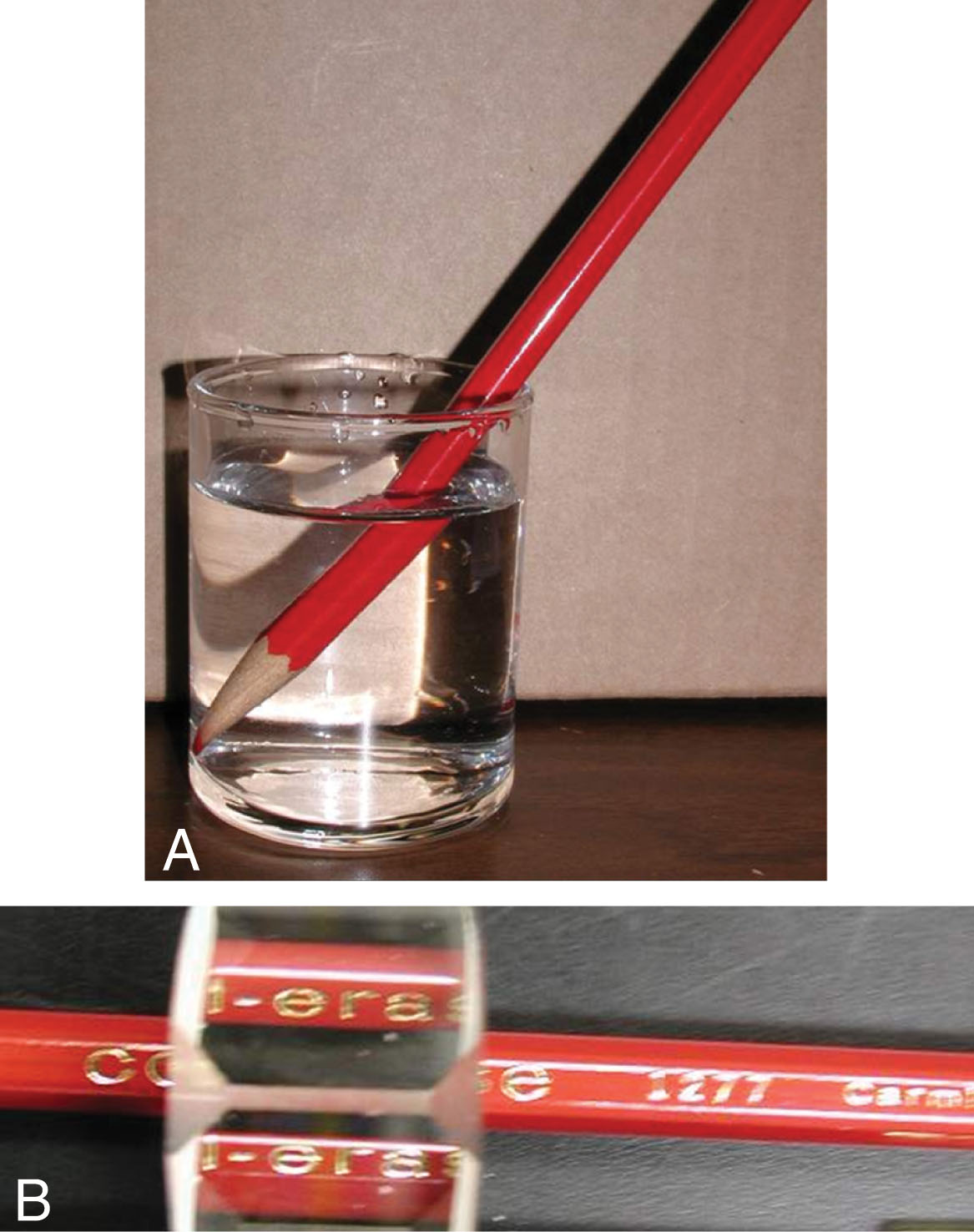
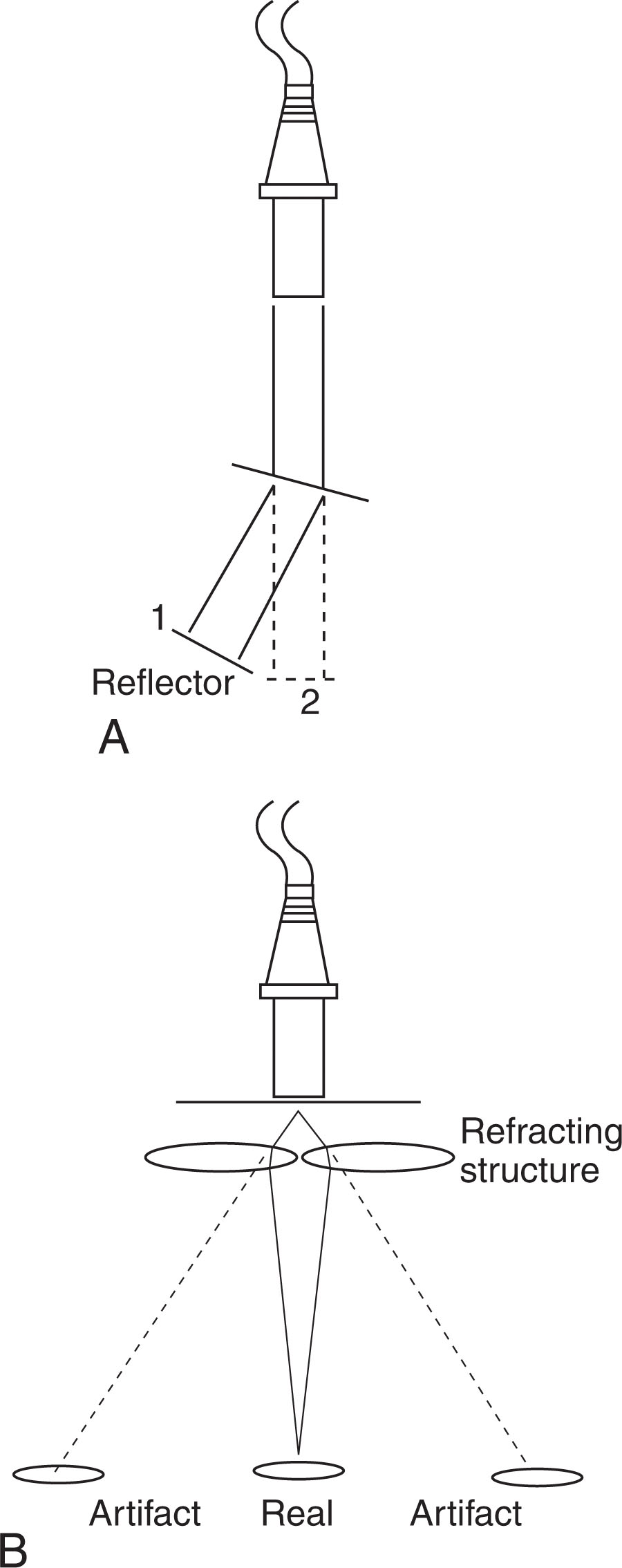
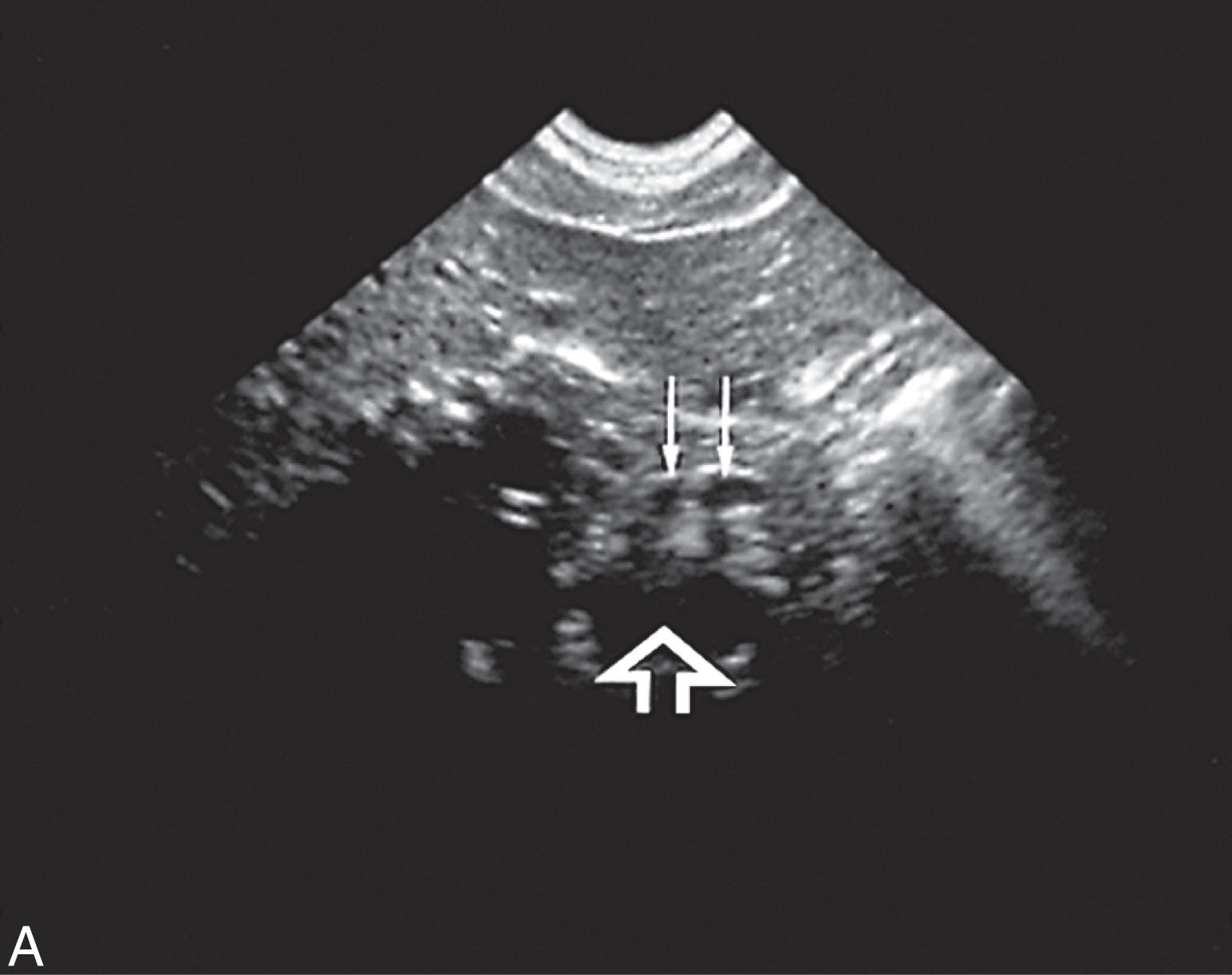
Become a Clinical Tree membership for Full access and enjoy Unlimited articles
If you are a member. Log in here